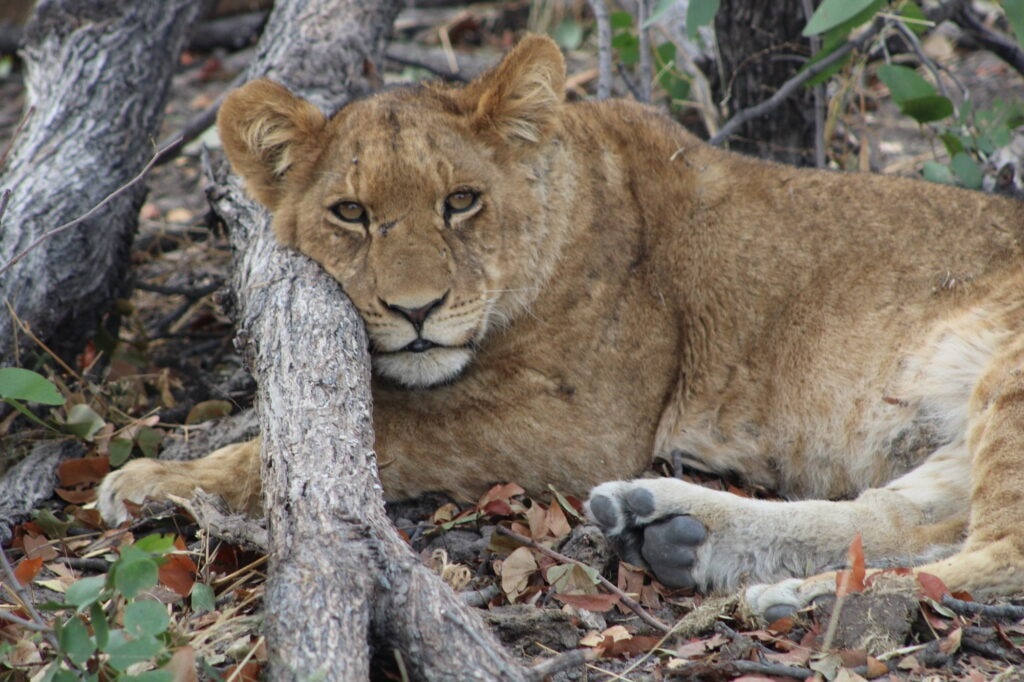With the increased sharing of global landscapes, interactions between humans and animals, especially large predators, are occurring on an unprecedented scale.
 A member of a lion pride lounges in the shade near Moremi Game Reserve in the Okavango Delta, Botswana. Image Credit: Kirby Mills
A member of a lion pride lounges in the shade near Moremi Game Reserve in the Okavango Delta, Botswana. Image Credit: Kirby Mills
According to a recent study on human-lion interactions performed by the University of Michigan, lions generally stay away from places where humans are prevalent unless they are experiencing food scarcity or habitat fragmentation.
The study, which was published online in the journal Communications Biology on October 17th, 2023, indicates that increasing land usage by humans in combination with the consequences of climate change could increase the likelihood of human-lion conflict, which might endanger lion populations.
Our study found that understanding the complex responses of wildlife to human disturbance—such as agricultural land or towns—is a key first step in fostering coexistence between humans and wildlife.
Kirby Mills, Study Lead Author and Postdoctoral Research Fellow, Institute for Global Change Biology, University of Michigan
Mills added, “In human-dominated landscapes, wildlife have to balance the tradeoffs between hunting prey and the potentially lethal risks of encountering humans. This is particularly true for large carnivores that often try to kill livestock, because threats to livestock can prompt retaliatory killing of large carnivores, which is a leading cause of large carnivore population declines around the world.”
Since roughly half of the lions’ current habitat is found outside of protected areas, these carnivores must frequently traverse damaged landscapes controlled by humans. Unfortunately, there is little research on the trade-offs that lions have to make when deciding between human threats and accessible prey, particularly when the scope of the study is enormous.
By analyzing previously published data from 31 research sites covering 40% of lion habitats globally, the multinational team of study authors hoped to improve our understanding of how lions respond to human disturbance. They discovered that, in almost two-thirds of the research locations, lions avoided populated areas or mostly hunted at night, especially in regions with a high concentration of cattle ranches.
All ecosystems, however, could be impacted by these behavioral adaptations.
The research was co-supervised by Nathan Sanders, professor and chair of the Department of Ecology and Evolutionary Biology, and Neil Carter, associate professor at the School for Environment and Sustainability.
Increasing nocturnal activity to avoid human encounters can influence competition between species, predator-prey dynamics and ecosystem function. Avoiding human-dominated areas altogether effectively limits the amount of habitat that lions can use and can increase competition, contribute to heightened risks of regional extinction, restructure wildlife community dynamics and, ultimately, reduce biodiversity.”
Neil Carter, Associate Professor, School for Environment and Sustainability, University of Michigan
Additionally, the study discovered that lions are more inclined to browse in higher-risk locations when seasonal vegetation cover, which indicates the availability of prey, or human presence, is more changeable. This suggests that when food is scarcer or their habitats are more fragmented, lions may be less likely to avoid humans. The erratic consequences of climate change are one of the elements contributing to all of these.
Climate change across Africa is projected to exacerbate resource stress for humans and wildlife alike, but the effects of climate change are too rarely emphasized in wildlife conservation. Our findings reinforce what many others have called for, things like dedicating adequate funding and management capacity to protected areas where lions live, while engaging with and empowering local communities. Successful conservation of large carnivores depends on sustainable coexistence with empowered and supported local communities, especially as the planet gets ever warmer and resources become increasingly limited.”
Nathan Sanders, Professor and Chair, Department of Ecology and Evolutionary Biology, University of Michigan
He concluded, “Successful conservation of large carnivores depends on sustainable coexistence with empowered and supported local communities, especially as the planet gets ever warmer and resources become increasingly limited.”
Source:
Journal reference:
Mills, K. L., et al. (2023). Tradeoffs between resources and risks shape the responses of a large carnivore to human disturbance. Communications Biology. doi.org/10.1038/s42003-023-05321-z